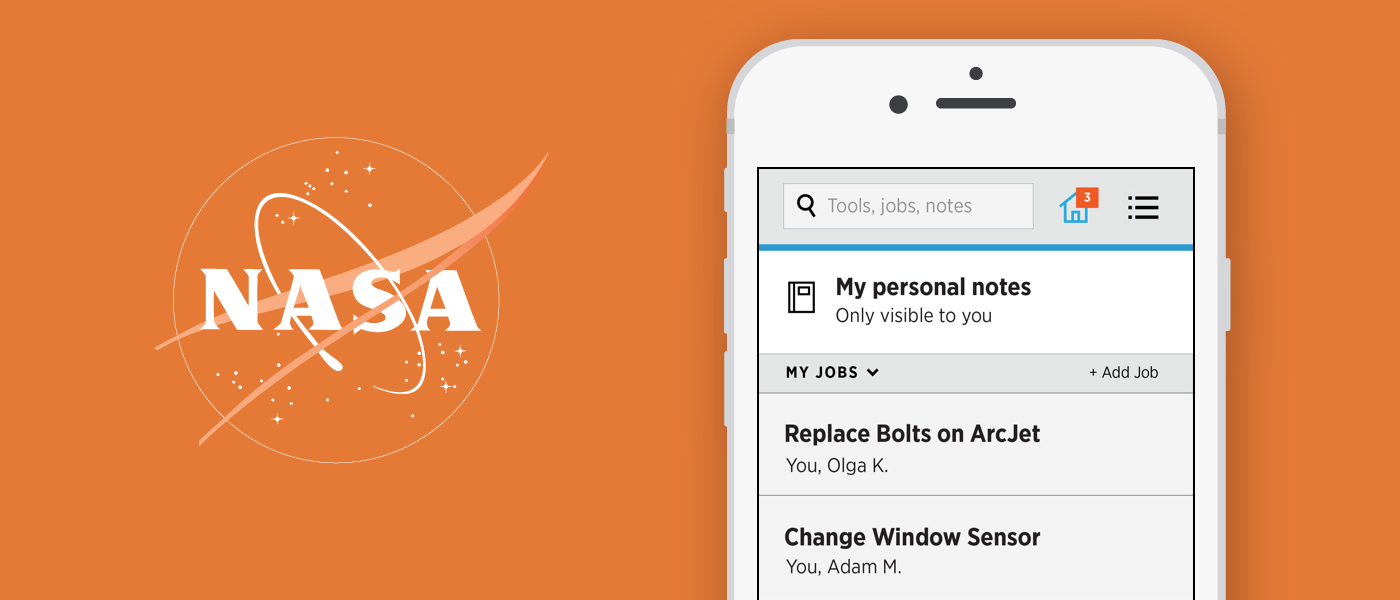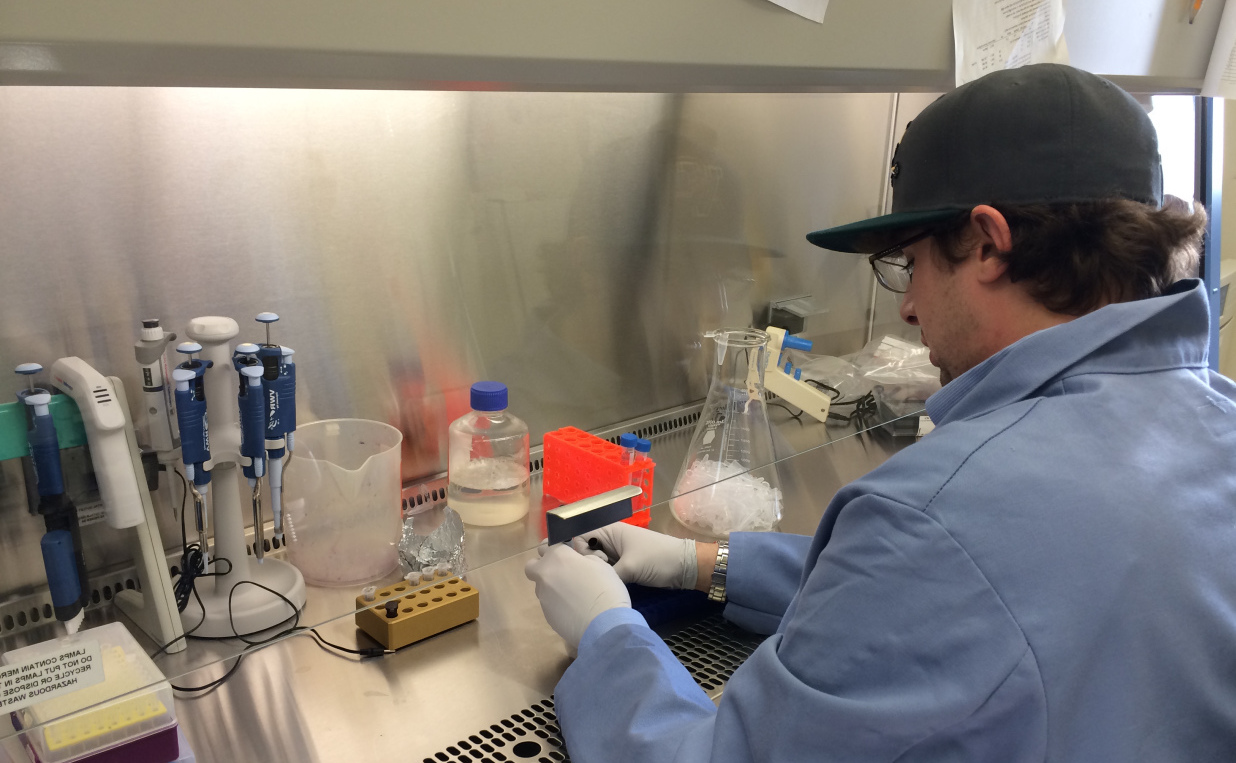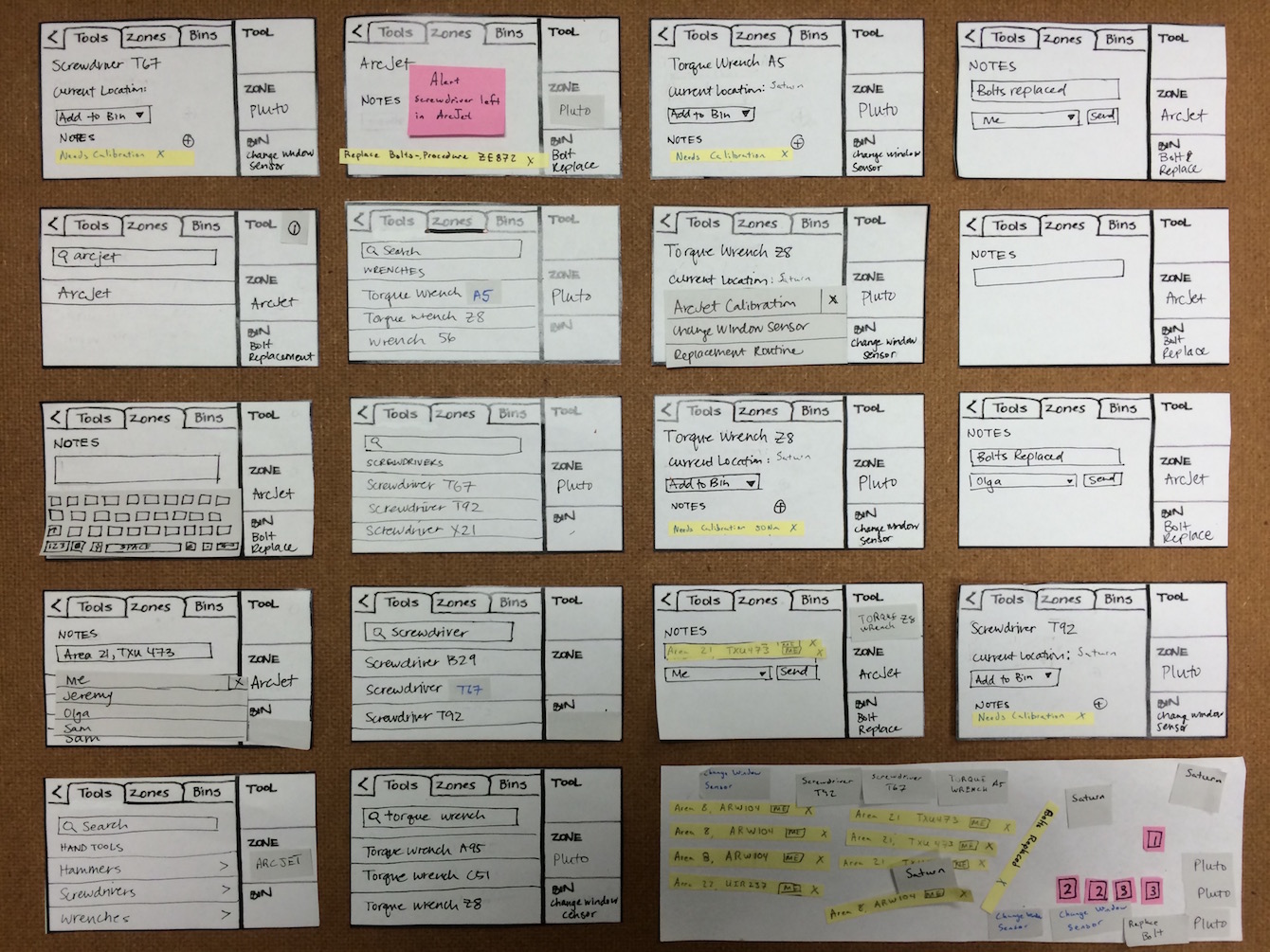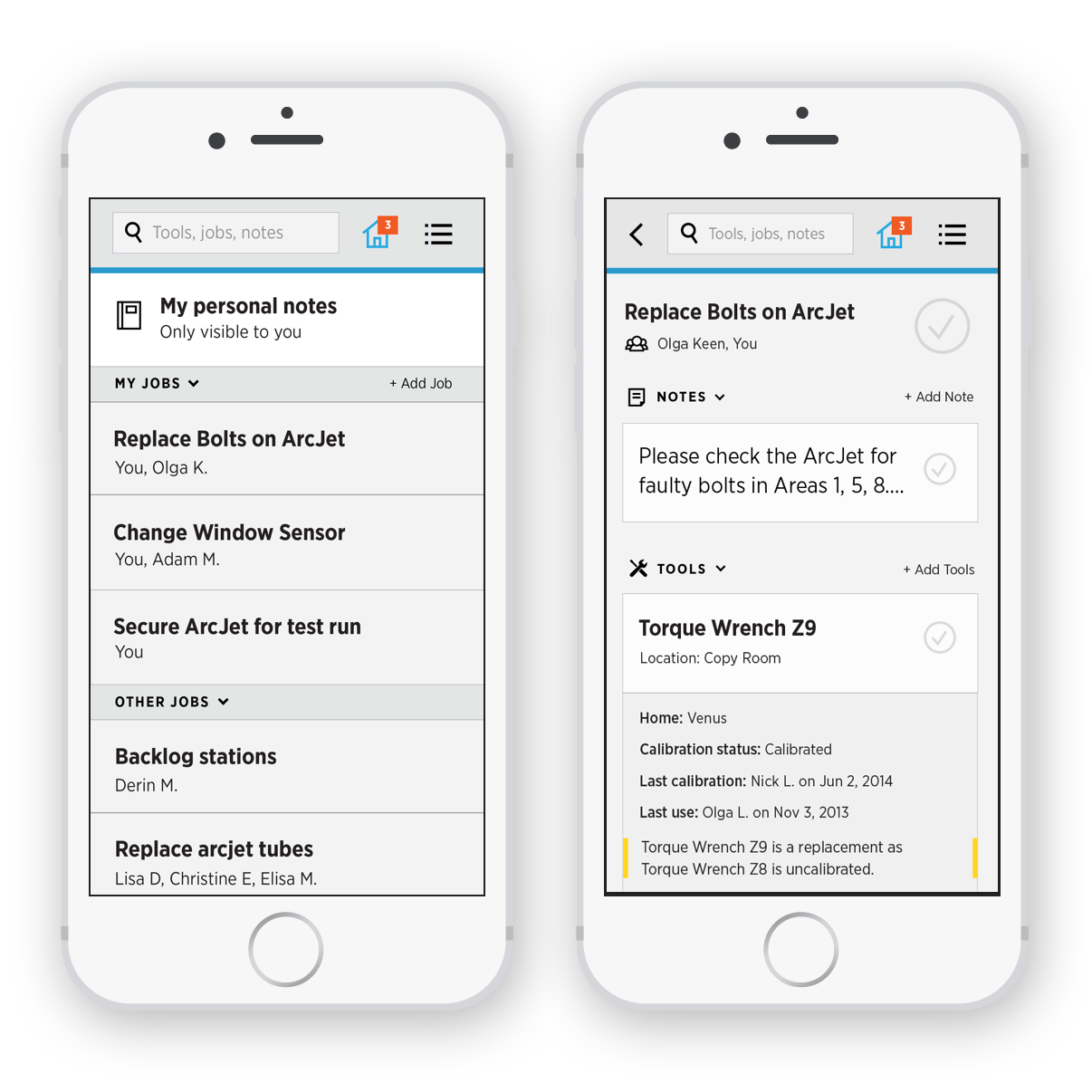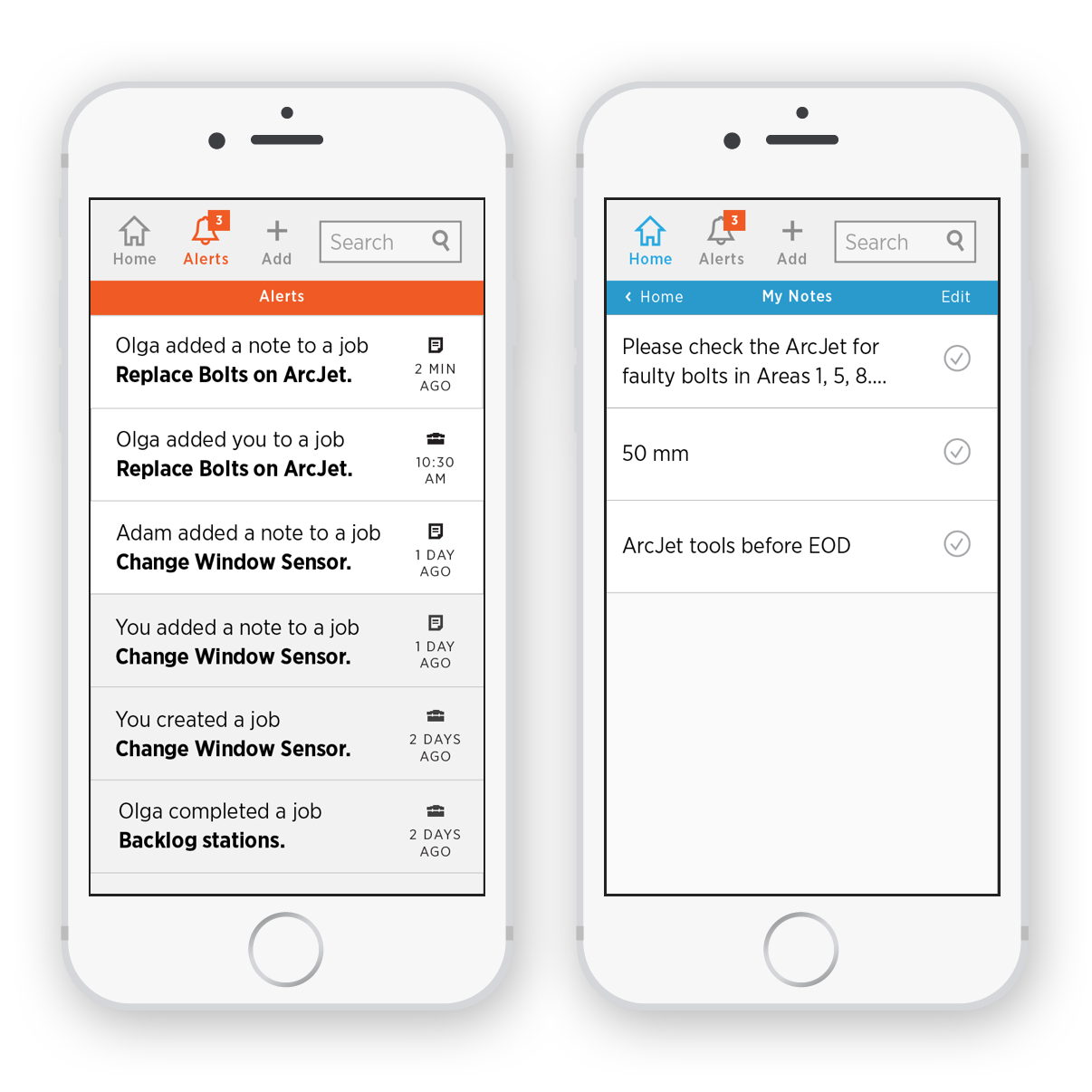NASA
Crewmembers aboard the ISS regularly perform experiment and
maintenance procedures. They work off static procedure documents and
use tools stored all over the space station. Currently, NASA personnel
must manually track the location and status of their equipment, so
tools are often misplaced or damaged, and data logs are unreliable.
Working on a team with NASA we created a tool to improve astronauts'
and engineers' ability to track and share tool statuses and procedure
information more efficiently.
